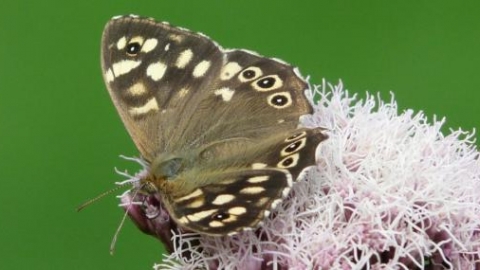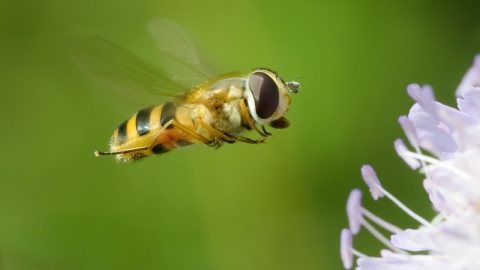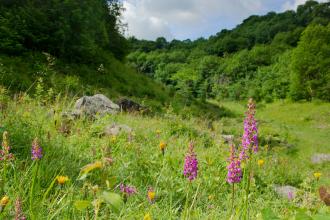
Rowsley speckled wood Shirley Freeman

Hoverfly, Natural Diversity via Flickr
Location
Know before you go
Dogs
When to visit
Opening times
Open at all timesBest time to visit
Spring and summer for wild flowers and invertebratesAbout the reserve
Once a railway siding, this small mosaic of wet grassland and wet alder woodland has developed naturally on the old sidings where springs have created wet and boggy conditions.
Access is limited due to the very wet conditions but the site can be viewed from the footpath that runs along the embankment.
Depending on water levels visitors are able to view the northern end of the reserve where small grassland glades remain attracting various butterfly species - please keep outside the fence.
The wetter open areas contain flowering plants, including meadowsweet, water forget-me-not, lesser spearwort and marsh thistle - this is a favourite with hoverflies, which breed in the marsh.
The reserve is rich in invertebrates, including many beetles, moths and around 50 species of cranefly, and in the wet areas you may see Tipula maxima, the largest species found in Britain.


